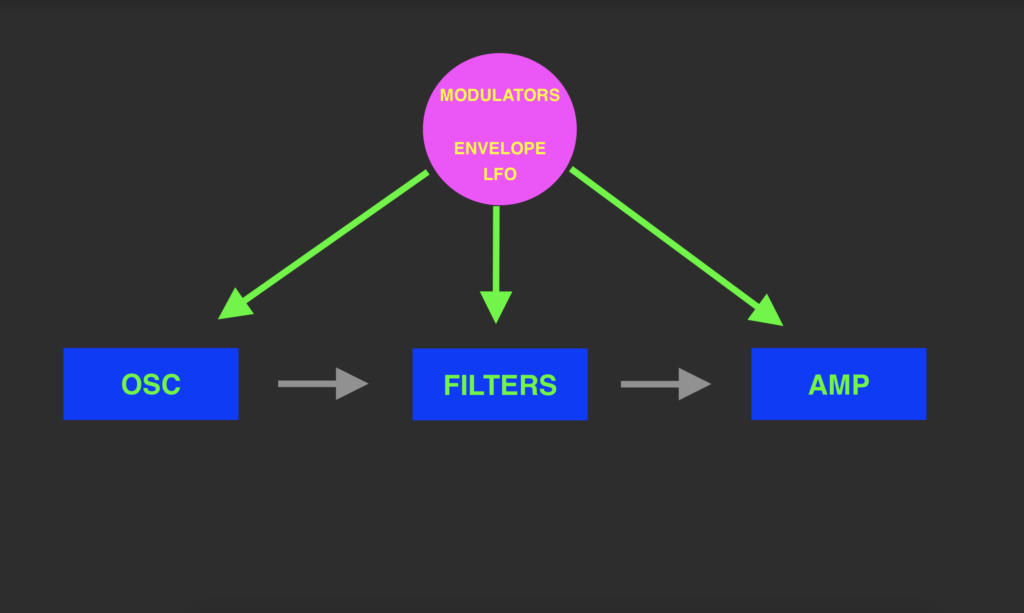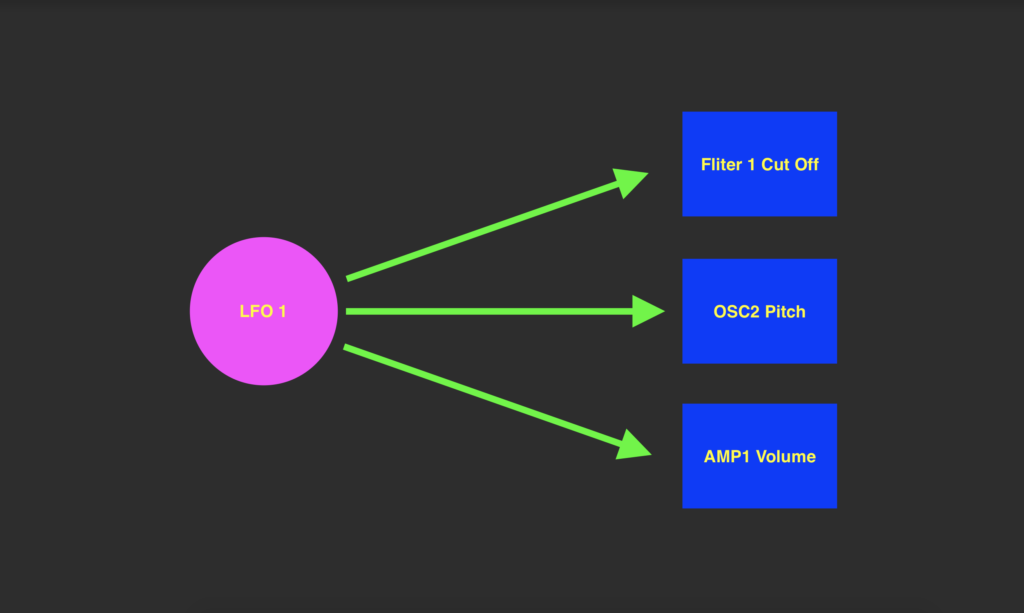Modulation is how synthesis and sound design really starts to gain its color and sparkle. Up to this point we’ve only covered the basic signal path of oscillators creating audio, filters contouring that audio, and then the amplifier outputting that audio. Next we will go over how modulation routing can be used to manipulate any of these three phases of the synthesizer.
A modulator is simply something that moves another parameter within the synth. If you’ve ever loaded up a stock patch in a synthesizer such as Omnisphere and found that the patch evolves and changes as you hold down a sustained note, then you have experienced the effects of modulation.

Analog has two LFOs which are commonly routed to oscillator pitch, filter cut off, or amplitude (volume), but there are more options. Analog has additional modulators: the pitch envelope, filter envelope, pitch wheel, and modulation wheel settings.
There are a few terms that are universal to all synths that you should get to know. First modulators are also referred to as sources or more specifically modulation sources. Wherever this modulator is pointed is known as the destination, the target, or the carrier. So for example you may have a source such as LFO1 and a target destination such as Filter2 Cutoff Frequency. In this case the modulator would be changing the filters cut off. Most synths modulation routings can be very complex with one modulator pointing to multiple parameters throughout the instrument.

